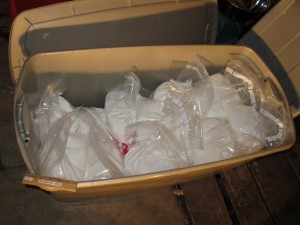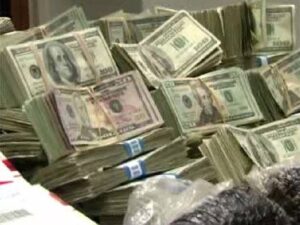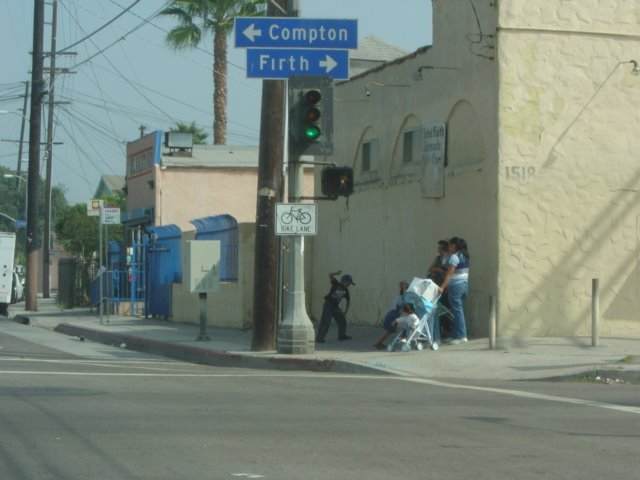LA’s Original Gangster- Tootie Reese
Back before the crack era put names like Freeway Ricky Ross, Monster Cody Scott and Waterhead Bo Bennett in the annals of gangster lore, and long before the Crips and Bloods held sway on LA streets, there was one man who was considered the Godfather in the black underworld- Tootie Reese. “When you mentioned drugs, whether it was heroin or coke, you heard Tootie’s name,” an LA narcotics detective said. “He was the kingpin, especially in the fifties and sixties. Everybody was working for Tootie Reese. Tootie Reese was probably one of the first blacks who really did big dope.”
Thomas C. “Tootie” Reese, alleged kingpin in black LA was a legend in the streets of the City of Angels. It’s said the Tootie introduced freebasing in 1976 and had celebrities like Richard Pryor doing it. “Tootie was a guy that I wanted to be like. At one time Tootie was the talk of the town in the streets, he was like a hero before he turned into my competition,” Freeway Ricky Ross said.
Court records show that Reese was arrested on cocaine charges at least three times- 1972, 1977 and 1980- before the explosion of crack. He said in an interview that cocaine’s emergence was linked to heroin’s decline. The South Central kingpin of the 60s and 70s was no stranger to the drug. As cocaine became the champagne drug, Tootie was in position to capitalize.
 “Lots of people were looking to leave heroin,” Tootie said. “Cocaine came along and took away the craving.” Reese was mainly a heroin and marijuana dealer, before cocaine came along. In the early 80s, before cocaine started seeping into the inner-city by the tons, Tootie was known as the “King of Cocaine” in the black community.
“Lots of people were looking to leave heroin,” Tootie said. “Cocaine came along and took away the craving.” Reese was mainly a heroin and marijuana dealer, before cocaine came along. In the early 80s, before cocaine started seeping into the inner-city by the tons, Tootie was known as the “King of Cocaine” in the black community.
Cocaine was a rich man’s drug and Tootie Reese was the man to see if you wanted to partake. But he was always looking for a way to make it more affordable. His introduction to crack came as early as 1976. Reese said he was in the Bay Area visiting a friend, who knew some chemistry students, “white guys at Cal Berkeley.” From them, his friend learned the mechanics of freebasing and within a year they were taught how to substitute baking soda for ether, turning powder cocaine into crack.
“He was actually spoken of on American Gangster when they did the story on Felix Mitchell. They showed a picture of him with Felix and told how Tootie was the supplier,” an LA Crip says. “In LA, when I was coming up, everyone talked about Tootie with a serious respect and awe.”
But as the 70s turned to the 80s the glamour of cocaine receded. The champagne drug of the rich in the 1970s, became the plague of the 1980s. Freebasing gave way to crack, and the rich man’s drug found its way to the ghetto, wreaking havoc on the streets with a vengeance. Becoming an urban nightmare in the process.
Tootie was a businessman and stayed hip to current trends. He was all about his money. “You know you got to stay abreast of what’s coming in,” Tootie said. Crack exploded because of dealers like Tootie. The market boomed in South Central because the black dealers “are the ones who can hustle it on the street,” police reported. But Tootie found he had lots of competition in the crack game.
Before the 1980s, Tootie had been viewed by law enforcement for almost two decades, as the top black drug dealer in LA. But with the introduction of crack and the Colombian cartels pumping cocaine into the country at an unprecedented rate all that changed. The old school gangster Tootie Reese tried to change with the times, but the former outlaw drug prince couldn’t compete with the youngsters.
One white drug dealer remembers Reese pulling a shotgun on him in the 1970s to ensure that he could purchase a pound of cocaine, but with tons of cocaine reaching our shores a year in the 1980s, it became nothing for young drug dealers to have 20 or 40 kilos. Tootie was in a game that he couldn’t win. His Godfather type status didn’t mean much to the young backs slanging crack. Before Tootie’s eyes, LA became the new Miami and his methods of operation became outdated.
“These new kids, once the 80s hit and these gangs hooked up with this dope, Tootie was nothing anymore,” the LA narcotics detective said. “He was an old grandpa who lost his teeth and wasn’t worth anything anymore.” The amounts of cocaine Tootie allegedly dealt were small contrasted with the tonnage that his successors in the black community started selling monthly. To give you an idea, Freeway Ricky Ross was one of Tootie’s first major successors.
 By the mid-1980s, when cocaine was flowing into the inner-city in noticeable amounts, Tootie was a dinosaur. The drug world in LA became a bigger, uglier and more vicious business than ever. The violence was real and all around. Gangbanging and drive-bys became the norm. Tootie tried to keep up, but the youngsters in the drug game seemingly passed him by.
By the mid-1980s, when cocaine was flowing into the inner-city in noticeable amounts, Tootie was a dinosaur. The drug world in LA became a bigger, uglier and more vicious business than ever. The violence was real and all around. Gangbanging and drive-bys became the norm. Tootie tried to keep up, but the youngsters in the drug game seemingly passed him by.
His old school tactics eventually led to his arrest in 1983 by the DEA, after Tootie made a multi-kilo cocaine deal and sold 2 kilos to an undercover officer. During a taped conversation with undercover agents, Tootie told them that “most of his customers purchased only five ounces or ten ounces and that he had only five kilo-size customers.”
On June 30, 1983, two undercover special agents contacted an associate at an LA gym to inquire into the possibility of establishing a regular connection for the purchase of cocaine. The associates told the agents he had a good source in Tootie Reese. Even though Tootie suspected that the new customers might be police officers he showed up the next morning in a blue Rolls Royce and had his son sell the undercover agents an ounce of cocaine.
The agents finally met Reese in person at the Olympic Auditorium where they were attending a fight. Reese approached the agents and introduced himself. An associate sold the agents another ounce of cocaine. Tootie was still paranoid about the agents, but continued doing business with them. At a meeting at a café on August 2nd, Tootie told the agents he had an Iranian source of heroin. He told the agents he had already fronted $100,000 for ten kilograms of heroin. He indicated that he had been in the narcotics business since 1965 and had a very high quality of cocaine for $4,800.
Tootie also told the agents he received about 100 kilos of cocaine every two months. A couple of days later he sold the agents four ounces of cocaine and an ounce of heroin for $12,400. The delivery was made in a green Rolls Royce. Tootie bragged to the agents some more, stated he owned millions of dollars of property, that he could supply any amount of cocaine and that he had several people working for him. On December 1st, he sold the agents two kilos of cocaine for $50,000 and they arrested him.
By the time he was convicted in 1984, Tootie was “probably the best known narcotics trafficker in this town, particularly in the black community,” the LA narcotics detective said. Tootie, who said he dealt with Colombian suppliers, owned three Rolls Royce’s and real estate valued by the US government at two to four million. He had caught up with the youngsters at their own game, by dealing weight.
The newspapers blew up the bust of LA’s black Godfather and made him seem a giant in LA’s crack plagued drug world. He became the face of black crime and when it became clear that Tootie was out of the picture, word hit the streets that, “It was wide open territory,” the LA narcotics detective said. “The day after his sentence was handed down all the papers in the LA County jail were gone because all the inmates wanted to read about the demise of the Godfather of drugs.” Following a bench trial in July 1984, Tootie was convicted of conspiracy to possess cocaine with intent to distribute.
“There were tons of articles and news clippings on Tootie back in the day,” the LA Crip says. “They made him out to be like Al Capone or Lucky Luciano.” Tootie was eventually sentenced to 35 years in prison for selling two kilos to a DEA agent, but he lamented that he never sold as much coke as the cops and press claimed.
“I ain’t never been big,” Tootie told the Los Angeles Times and evidence gathered during the investigation of Reese backed up this assertion that his cocaine dealing prowess had been greatly overrated and exaggerated by the press, law enforcement and even Tootie himself. Tootie challenged his conviction and eventually got a time cut even though the US Attorney asked the judge to impose a 45 year term. “Forty-five years is the sentence the government believes is appropriated based on the conviction in this matter,” the US Attorney said at the resentencing. But the judge wasn’t swayed and cut Tootie’s sentence.
“Tootie has been low key ever since he’s gotten out of the feds. But that’s a story that should have been on American Gangster. Real LA legend right there. He was like on some Blow time,” the LA Crip says. “He was the man, before Freeway Rick, before Waterhead Bo, before Harry-O. Tootie Reese was the real original gangster in LA.”



